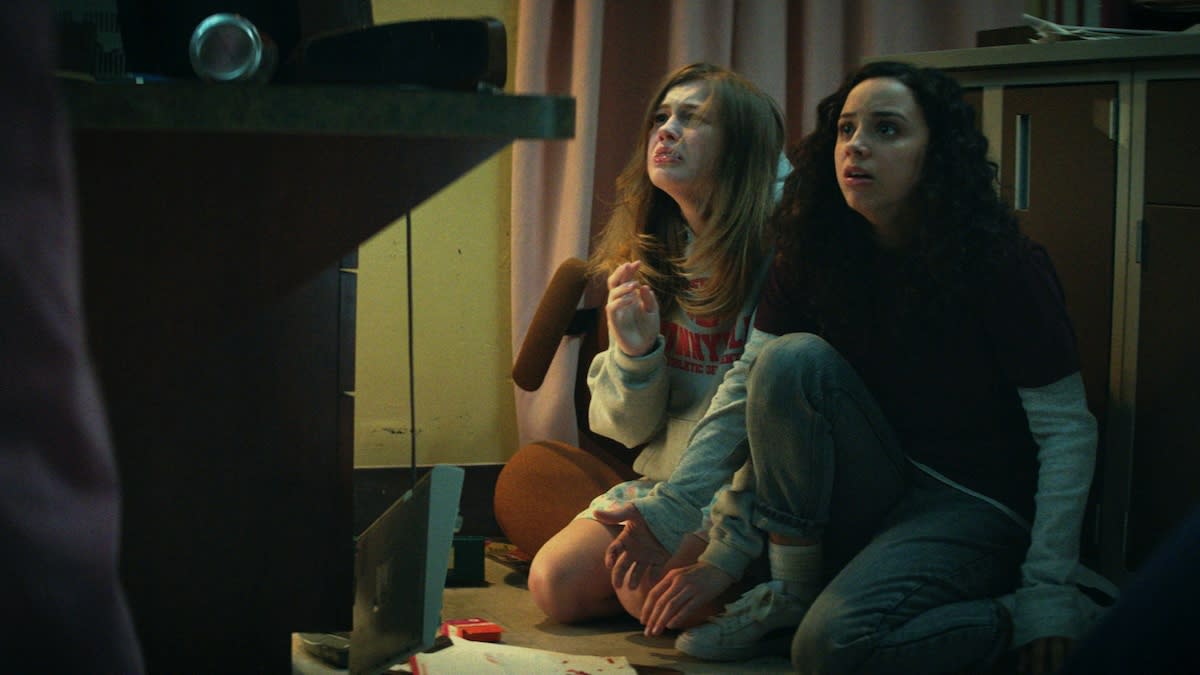Why Netflix's ‘Fear Street’ focuses on teen girls in love — characters that ‘normally would die very quickly in horror movies’
For decades, fans and pundits have debated the homoerotic subtext of 1985’s A Nightmare on Elm Street 2: Freddy’s Revenge, and whether one of its key characters was gay.
Netflix’s new horror trilogy Fear Street proves how far we’ve come since.
Based on the popular '90s book series by R.L. Stine and directed by Leigh Janiak (who co-wrote with Phil Graziadei), the throwback slasher films center around a love story between two teenage girls, Kate (Julia Rehwald) and Heather (Maya Hawke), as their town of Shadyside — the wrong side of the tracks to neighboring Sunnyvale – is tormented by a centuries-old witch who possesses people into murderous rampages.
“That was one of the exciting things about the movies to me when we started figuring it out is that there would be a love story at the center, bringing the characters [together] throughout the three movies,” Janiak (Honeymoon, Scream: The TV Series) tells Yahoo Entertainment (watch full interview above) about the trilogy, which releases in three period-set installments over three consecutive weeks (Fear Street Part 1: 1994 on July 2, Fear Street Part 2: 1978 on July 9 and Fear Street Part 3: 1666 on July 16). “Part of the awesomeness about developing the trilogy was that we created this mythology that had to do with Shadyside, and the idea that everyone in Shadyside feels like they’re ‘other’ in some way.

“That kind of core thing, of what it means to be told you’re an outsider and that your story is not enough, that’s central to the entire thing. So it made sense as we were trying to figure out who each of the characters would be, to tell this queer love story. So it was important to me, it was important to my writing partner, who grew up as gay in the '90s. The whole thing of Fear Street I think is telling the stories of characters that normally would die very quickly in horror movies.
“So it was exciting to be able to give characters a moment that they should have. … Because that’s what the world was, it just wasn’t what films were necessarily reflecting of that time.”
Something proven by the fact that, all these years later, it’s still a case of subtext in a Freddy Krueger movie that remains one of the most prominent examples of LGBTQ representation in mainstream horror.
Fear Street is here to help change that.
Fear Street Part 1: 1994 is now streaming on Netflix.
— Video produced by Jen Kucsak and edited by John Santo
Watch the trilogy trailer:
Read more on Yahoo Entertainment:


